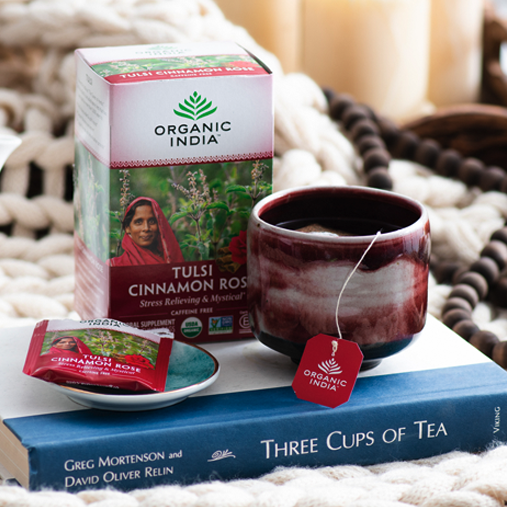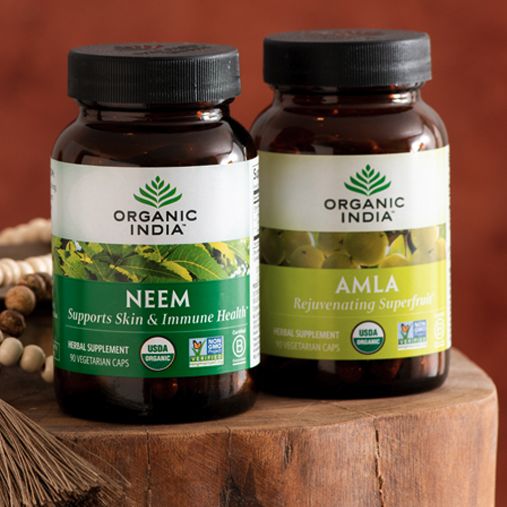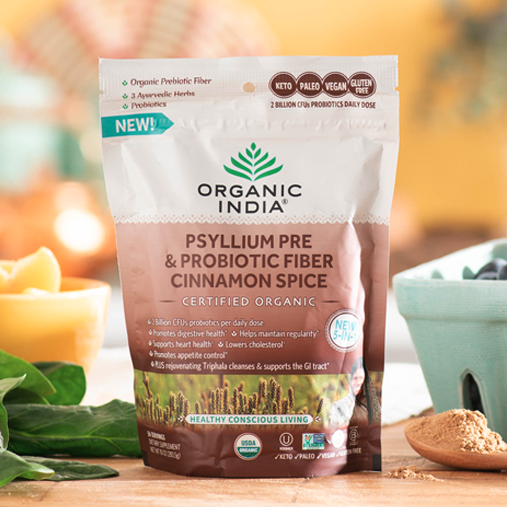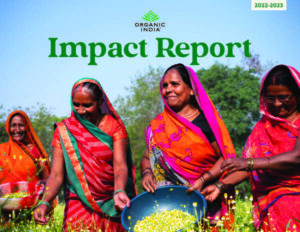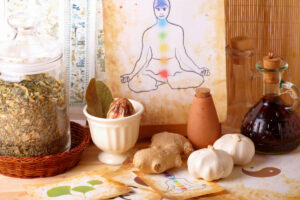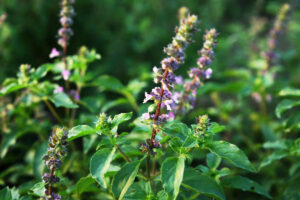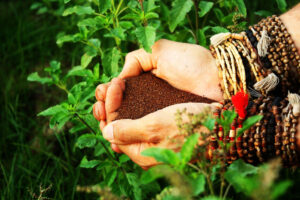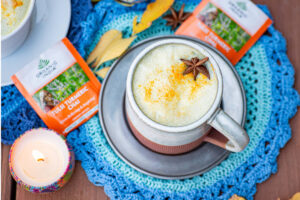Staying healthy is something all people want to live an optimal life. But there are quite a few obstacles that may present themselves on the journey to wellness. Genetics, daily demands, accessibility, lifestyle, diet and self-care are all contributing factors to overall health. That being said, there are many shifts one can make to improve his or her well-being and therefore bring healthy blood sugar support both short and long term.
Blood Sugar and Health
Blood sugar metabolism is more interconnected with the entire mind-body system than one may realize. Everything from mood to circulation to heart health benefits from this natural mechanism that helps facilitate wellness.
- Mood. Blood sugar metabolism is linked to overall wellbeing and, though not the primary function, this mechanism helps modulate mood, relieve stress and bring about mental clarity.
- Energy Levels. Blood sugar metabolism is the very process that allows the cells to retrieve glucose from the blood to be used as energy, helping a person feel energized and vitalized for daily tasks and exercise.
- Satiety. When a person eats complex carbohydrates like legumes and whole grains, the sugars are naturally metabolized slowly, causing feelings of satiety and satisfaction.
- Inflammatory Response. When glucose levels are in a healthy range and insulin response is normal, it preserves a natural, healthy inflammatory response in the body. When sugar is not metabolized efficiently, it may create an imbalanced inflammatory response.
- Heart Health. Blood glucose and heart health are closely linked. When a person’s levels are within healthy range the heart can function normally by maintaining healthy nerves and blood vessels.
- Circulation. Balanced blood sugar helps maintain healthy circulation through the vital organs and to the extremities.
5 Natural Ways to Support Healthy Blood Sugar
To be healthy, balance is important. A balance of movement and stillness, of colorful and unprocessed whole foods, of work and play. It is important for people to be kind to themselves on this quest to optimal health, since there may be factors out of one’s control such as family history, environmental conditions, societal infrastructure and more. Here are key points for how to maintain healthy blood sugar levels and lead a vibrant life:
Physical Activity.
According to the Center for Disease Control and Prevention (CDC), adults should get at least 30 minutes of moderate physical activity per day (like brisk walking), 5 days per week. When a person exercises, it can help increase insulin sensitivity, allowing glucose to enter the cells more efficiently to be used as energy. Even without the presence of insulin, when the muscles contract during exercise, they are able to take up glucose to use as fuel. For this reason, among others, it’s beneficial to keep exercise in the daily routine.
Dietary Choices.
A balanced diet full of various whole, unprocessed fruits, vegetables, whole grains and lean proteins in the portions right for one’s body is a key component to healthy living. For individuals to maintain balanced blood sugar levels, it is recommended to keep added sugars to no more than approx. 24 grams per day for women and 36 grams per day for men. Also, switch simple carbohydrates like white bread and pastas for complex carbohydrates like 100 percent whole grains, oats, legumes, and other fibrous foods that actually help slow the absorption of sugar. This process also helps keep sugar levels from spiking, while keeping cravings in check.
Water Consumption.
Water is essential for the body’s systems to function properly and to stay overall healthy, hydrated and energized. According to the CDC, typically women should drink approximately 11-12 cups of water per day, and men should drink approximately 15-16 cups of water per day. Drinking lots of water not only helps rehydrate the blood, it helps flush excess sugar from the kidneys, maintaining healthy blood sugar levels. Note that exact amount may vary from person to person.
Try Herbal Remedies.
Herbal remedies have been around for thousands of years for everything from immune and cognition function to digestion and sugar metabolism. From India to China to the Mediterranean to South America, plants have been the original way to wellness for humans. In modern times, research continuously reinforces the power of plants, whether the root, bark, seeds, leaves or flowers. There are many plants that support blood sugar metabolism, from familiar ones like Cinnamon to rare ones like Bimbi, also known as Ivy Ground. Adding an herbal tea or supplement to one’s routine can help the body naturally support healthy blood sugar levels. Or you can try an herbal Sugar Detox.
Mindfulness Practices.
Believe it or not, stress can cause blood sugar spikes. When a person is very stressed, cortisol (nicknamed the “stress hormone”) rises, which causes the body to store more sugar in the blood to be ready to be used as fuel in the case of an emergency. Practices like meditation, yoga, breathing exercises, and tai chi teach people how to better calm the body and mind. Even just 15 minutes per day can help decrease levels of stress and worry, and help one take better control of their mind and thoughts—and thereby their nervous system and related functions—to live a more peaceful life.
To keep blood sugar in a healthy range, it’s helpful to practice a healthy lifestyle with plenty of exercise, nutrient-dense meals, relaxation and herbal supplements that drive one forward on the path to optimal wellness.
How it works: Sugar Metabolism and Insulin Response
Let’s take a step back and see the natural mechanism of blood sugar metabolism. Sugar metabolism is the process of the body using glucose for energy. For context: foods are made up of three major nutrients: proteins, fats, and carbohydrates. We will specifically examine the journey of carbohydrates (sugars, starches, fibers):
- A person eats a food item that contains simple carbohydrates, like cookies, bread, pasta or potatoes, for instance.
- During digestion of that food item, chemicals in the stomach break down the carbohydrates into glucose.
- The glucose then enters the bloodstream, which, naturally, causes the blood sugar levels to rise.
- As a response, the pancreas, located just behind the stomach, releases a hormone called insulin. This is called the insulin response.
- Insulin then enters the bloodstream and works almost like a key, giving glucose access into the cells and out of the bloodstream.
- Once glucose is in the cells, it can be used by the body as energy. As a result, blood sugar levels return to balance.
This is an example of healthy sugar metabolism and proper insulin response. When there is too much glucose, or not enough insulin, it is difficult for glucose to enter the cells, which causes a surplus in the bloodstream. This is known asinsulin resistance. An ongoing surplus of sugar in the blood can potentially lead to many different health issues.
Top Herbs for Support of Blood Sugar Already in a Healthy Range
Herbs are a powerful, natural way to support blood sugar metabolism. Herbal remedies have long been used to help maintain blood sugar levels in an already healthy range. From India to the Mediterranean to China to the modern day United States, these herbs have played and continue to play a role in the daily maintenance of healthy blood sugar metabolism and insulin response.
- Ceylon Cinnamon. According to studies, Ceylon Cinnamon has been found to help support healthy insulin sensitivity at the cellular level and aid blood sugar metabolism.
- Fenugreek. Fenugreek seeds contain natural alkaloid trigonelline and steroidal saponins, which are considered insulinotropic compounds that help maintain healthy blood sugar levels.
- Psyllium. Psyllium is a popular source of fiber that helps mediate the digestive process and regulate a healthy glycemic response, helping to maintain healthy blood sugar levels after meals.
- Bitter Melon. Bitter melon has properties that behave like endogenous insulin in the body, guiding sugar to be used by the cells as fuel rather than stored in the bloodstream.
- Ginseng. Ginseng has been found to help slow absorption of sugar during digestion, modulate insulin response and help move sugar from the bloodstream into the cells.
- Holy Basil. Holy basil, also known as Tulsi, is found to have properties that help support healthy fasting blood sugar levels and modulate the uptake of glucose by muscle cells.
A Novel Formula for Blood Sugar Support
Fortunately, there are some very rare herbs from the East that are just now beginning to be known by small circles of Ayurvedic and Medical experts in the West. These three Indian herbs, known as Bimbi, Bougainbelia and Sadabhar, comprise a novel formula that robustly supports healthy blood sugar regulation. Bimbi is the main ingredient, while the other two herbs are added to reinforce its effects. This proprietary blend has a history of successful use in India, and now it is available in the United States. Such unique, powerful herbs may be a game changer for those searching for the right herbal fit to maintain healthy blood sugar metabolism.
A recent study has found that this formula can help modulate blood sugar metabolism in a number of ways. The study came to these key findings about the formula:
- Modulates key enzymes implicated in glucose metabolism
- Supports insulin action in the bloodstream, helping improve the efficiency and effect of endogenous insulin.
- Increases endogenous insulin sensitivity, so glucose may more easily enter the cells to be used as energy.
Here is a closer look at the clinical findings of each of the three herbs in this novel herbal compound:
Bimbi.
Bimbi, also known as ivy ground, is a perennial climbing plant that grows all over the temperate regions of India. Studies have found Bimbi’s ability to help slow sugar absorption and provide an endogenous insulin-like action in the bloodstream to help maintain glucose homeostasis. It also reduces enzymatic activity resulting in reduced formation of glucose in the liver, thereby reducing body burden of glucose by influencing liver enzymes.
Bougainbelia.
Bougainbelia is a beautiful flowering plant that grows from South America to India. It helps support blood sugar metabolism in three primary ways: improves sensitivity of insulin receptors; improves insulin function, efficiency and utilization; and stimulates muscular glucogenogenesis — in other words, promotes glucose storage in the muscle, which makes energy more readily available for use.
Sadabhar
Also known as Madagascar Periwinkle, Sadabhar is prevalent in tropical and subtropical regions of Madagascar, Sri Lanka and India. The findings of the study point to the herb’s ability to support insulin secretion and enhance insulin activity, thereby modulating glucose metabolism. The plant’s bioactive compounds are linked with the improved insulin secretion and action.
Together these three rare herbs work synergistically to provide robust support of healthy sugar metabolism.
Lifestyle, Herbs, and the Allopathic Approach
Holistic health looks not only to the body and its symptoms, but the mind, spirit and underlying factors to achieve optimal balance and vitality. This means that a healthy lifestyle, balanced diet, mindfulness practices and herbal remedies are all key accompaniments to traditional allopathic medicine for whole system wellness and healthy sugar metabolism. Be sure to always first visit with a doctor for all things related to health, whether blood sugar-focused or otherwise; and consult with them before taking any specific herbal remedies, or making dramatic dietary or lifestyle changes.
Glossary of Blood Sugar Related Terms:
Blood Sugar: Blood sugar, also known as glucose, is the primary sugar found in the blood and a person’s main source of energy.
Blood Sugar Metabolism: Blood sugar metabolism is the process of carbohydrates being converted to glucose in the stomach, and then released into the bloodstream to be used as fuel by the cells.
Carbohydrate. A carbohydrate is a macronutrient in food, and includes sugars, starches and fibers.
Simple Carbohydrates. Simple carbohydrates, like refined sugars, are broken down quickly by the body and enter the bloodstream rapidly to be used as energy.
Complex Carbohydrates. Complex carbohydrates, like whole grains, legumes, oatmeal, and quinoa, are sugar molecules in longer chains, which digest more slowly and are typically high in fiber.
Glycemic Response. The glycemic response is the effect that food has on a person’s blood sugar levels.
Insulin. Insulin is a peptide hormone released by the pancreas to help regulate the metabolism of glucose so that it may be taken up by the cells to be used as energy.
Insulin Response. The insulin response is the action of insulin being released by the pancreas in the presence of glucose.
Insulin Sensitivity. Insulin sensitivity is the action of the cells being sensitive, or responsive to, the presence of insulin, permitting glucose to easily enter the cells to be used as energy.
Insulin Resistance. Insulin resistance is when the cells are not responsive to the presence of insulin, making it difficult for glucose from the blood to enter the cells; thereby causing increased levels of glucose in the blood.
Insulinotropic. An insulinotropic is a natural compound that helps modulate insulin activity.
Disclaimer:
These statements have not been evaluated by the Food & Drug Administration. This product is not intended to diagnose, treat, cure or prevent any disease. The advice and tips on this page are for informational purposes only. For specific health guidance and treatment, please see a healthcare professional.

